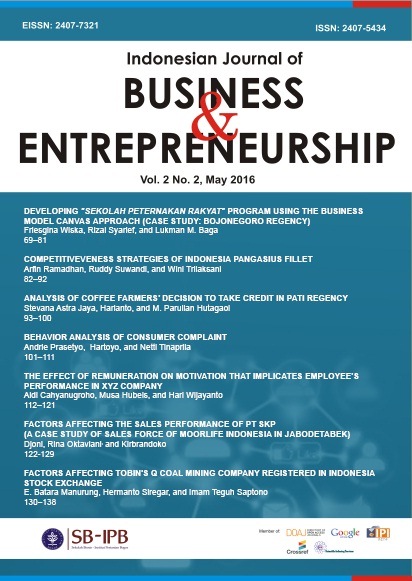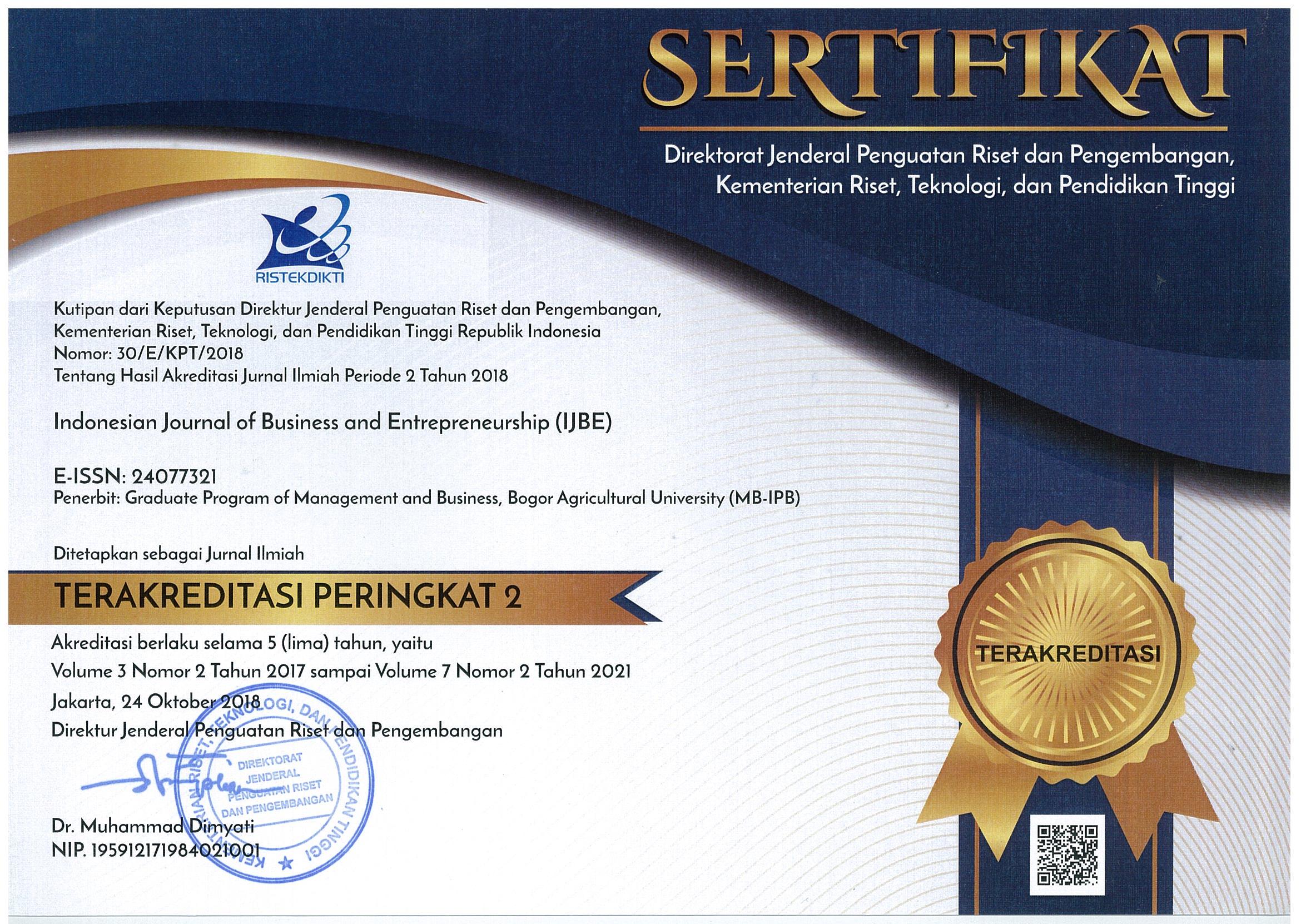BEHAVIOR ANALYSIS OF CONSUMER COMPLAINT
Abstract
Complaining is one form of communication for consumers to express their dissatisfaction. Understanding the consumer complaint behavior is an important thing for businesses; however, it is not easy to do. The initial step in understanding this behavior of consumer complaints is to map consumers based on their behavior of complaints and analyze the factors that influence this. This study examines the complaint behavior of consumers in Cibubur who have experienced dissatisfaction with a product. The objectives of this study are to map the consumer complaint behavior and identify its relationship with various factors such as consumer demographics, personality, attitude to businesses, attribution of the causes of dissatisfaction, and product attributes. A crosstab descriptive analysis method was used to map the consumers, while the Pearson correlation analysis methods was used to analyze consumer complaint behavioral relationships with various factors. The results of this study indicated that consumers in Cibubur based on their complaint behavior are classified into four groups: passive, voicers, irates and activist. The passive consumers dominate the category with a percentage of 49%. The voicers, irates, and activist belong to the complaining type and are dominated by young women, with high levels of education and income.Keywords: consumer complaint behavior, product, crosstab, pearson correlation
Downloads
References
Keng KA, Richmond D, Han S. 1995. Determinant of consumer complaint behavior: A study of Singapore consumer. Journal of International Consumer Marketing 8(2): 59–76. http://dx.doi.org/10.1300/J046v08n02_05.
Metehan T, Yasemin AZ. 2011. Demographic characteristics and complaint behavior: an empirical study concerning Turkish customer. International Journal of Business and Social Science 2(9): 42–48.
Mousavi M, Esfidani MR. 2013. A comprehensive model of customers’ complaint behavior. International Journal of Academic Research in Business and Social Sciences 3(5): 549–569
Mowen JC, Minor M. 1997. Consumer behavior (5th ed). Upper Saddle River - New Jersey: Prentice-Hall.
Singh J. 1990. A Topology of consumer dissatisfaction response style. Journal of retailing 66(1): 57–99
Singh J. 1996. When consumers complain : a path analysis of the key antecedents of consumer complaint response estimates. Academy of Marketing Science 24(4): 350–361. http://dx.doi.org/10.1177/0092070396244006.
Huang JH, Chang CC. 2008. The role of personality traits in online consumer complaint behavior and service recovery expectation. Journal of Social Behavior and Personality 36(9): 1223–1232. http://dx.doi.org/10.2224/sbp.2008.36.9.1223.
Phau I, Sari RP. 2004. Engaging in complaint behaviour – An Indonesian perspective. Marketing Intellegent & Planning 22(4): 407– 426. http://dx.doi.org/10.1108/02634500410542770.
Mensah AF, Nimako SG. 2012. Influence of demographic variables on complaining and non-complaining motives and responses in Ghana’s mobile telephone industry. European Journal of Business and Management 4(12): 27–37.
Manikas PA, Shea LJ. 1997. Hotel complaint behavior and resolution: a content analysis. Journal of Travel Res 35(2): 68–73
Blodgett JG, Granbois DH. 1992. Toward an integrated conceptual model of consumer complaining behavior. Journal of Consumer Satisfaction, Dissatisfaction and Complaining Behavior 12(5): 93–103.
Fernandez DVDH, Santos CPD. 2007. Consumer complaining behavior in developing countries: the case of Brazil. Journal of Consumer Satisfaction, Dissatisfaction and Complaining Behavior 20 (12): 86–109.
Ngai EWT, Heung VCS, Wong YH, Chan KY. 2006. Consumer complaint behavior of asians and non-asians about hotel services. European Journal of Marketing 41(11): 1375–1391.
Thogersen J, Juhl HJ, Poulsen CS. 2003. Complaining: a function of attitude, personality and situation. American Association Marketing and Public Policy Conference 11(3): 70–83.
Manzoor A, Rizwan M, Nazir M, Perveen N. 2013. Complaining behavior: the effect of different factors on consumer complaining behavior. Journal of Public Administration and Governance 3(3):203–225
Ndubisi NO, Ling TY. 2006. Complaint behavior of Malaysian Customers. Jurnal of Management reserch 29 (1) :65–76.
Berry R. 2012. How we complain: the effect of personality on consumer complaint channels. [Thesis]. University of Nevada, Las Vegas.
Fatma A. 2012. Intensi komplain konsumen ditinjau dari sikap asertivitasnya. Talenta Psikologi 1(1): 18–28.
Sutanto J, Gunawan B, Thio S. 2014. Perilaku dan motivasi komplain konsumen terhadap restoran-restoran di surabaya. Jurnal Manajemen Perhotelan Univ Petra Surabaya 1: 125–138.
Yoga IMS, Warmika GK. 2013. Hubungan karakteristik demografi dengan perilaku keluhan konsumen. Jurnal Fakultas Ekonomi Universitas Udayana 1(1): 1106–1124.









